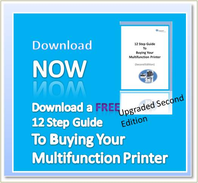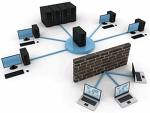When most of us think about printing we think of the process that started with Gutenberg and which has been refined over the centuries to permit fast, efficient and colourful information transfer. Traditional printing ranges from a simple monochrome sheet to full feature coloured products including art work and magazines. _3D-Printed_House.jpg?width=256&height=144&name=Interior_View_of_the_Additive_Manufacturing_Integrated_Energy_(Amie)_3D-Printed_House.jpg)
Of course over the years it has been refined into wondrous advertising pieces with the processes using other substrates besides paper. Vinyl, cloth, metal, wood, glass and many more surfaces have been used to receive the printed message and images.
In office environments we have seen the development of super fast, highly capability multifunction printers (MFP) which permit the rapid production and assembly of all kinds of printed documents and materials. Wide format printers come in massive widths and permit the production of advertising materials which have radically changed the way that images and other information have been displayed and used. Vehicle wraps are now common with every urban street experiencing all sorts of vehicles, especially transit buses, which showcase local and national brands and personalities.
3D Printing Adds More Dimension
Ever since Gutenberg created the first printing press, printing has been largely a two dimensional process.
With the advances of 3D printing a whole new range of possibilities have emerged which are radically impacting many industries and most notably differing elements of manufacturing.
A recent CNN Money article showcases how manufacturing has changed from the traditional industry we think of as a result of the introduction of 3D printing capabilities.
While the article centres upon US experience similar experiences are occurring throughout the industrialized world including Canada.
The CNN article describes the experience of a new type of manufacturing worker:
"Andrew Rosa doesn't do back breaking work. His hands aren't swollen, blistered or greasy. He doesn't operate loud machines. He isn't in a labor union." It describes how he works as part of a team which sets up, programs and manages 3D printed manufacturing which produces products faster, more efficiently and with less risk to workers than would have been possible in the past.
The company highlighted in this article is simply one of thousands which have adopted the capabilities of 3D production and who are revolutionizing industries.
The interesting part of 3D printing is how the processes used really do mimic traditional printing processes, where a product grouping, toner or ink usually, are layered upon a substrate to create an image of a message.
In 3D printing the same process is used only it is layered in multiple super think layers to create an eventual 3D product. Of course where the real changes are occurring is in the printing "inks" that are being layered. In early instances there were various forms of plastics which could be melted and extruded to create the layers needed.
Through constant experimentation 3D printing is now employing many other different kinds of materials including metals, food products, and even cement which was used by one company to build a 3D printed house. There are several ways that this challenge has been attacked.
The merging of robotic technologies which continue to expand in capabilities and 3D printing concepts are also expanding the potential solutions which can be deployed to attack problems. These are part of the reasons why the large printing solutions can be developed since the process of getting the right materials to the devices can be handled by different types of automated handlers.
The next type you hit the print button on your computer software program think about how you are carrying out exactly the same kind of action which others are using to create some of the pieces we all need to assemble and build the manufactured products we consume. Certainly at this point only the tip of the iceberg has been exposed and over the next few years the impact of this new way to think about manufacturing is going to be felt much more.




